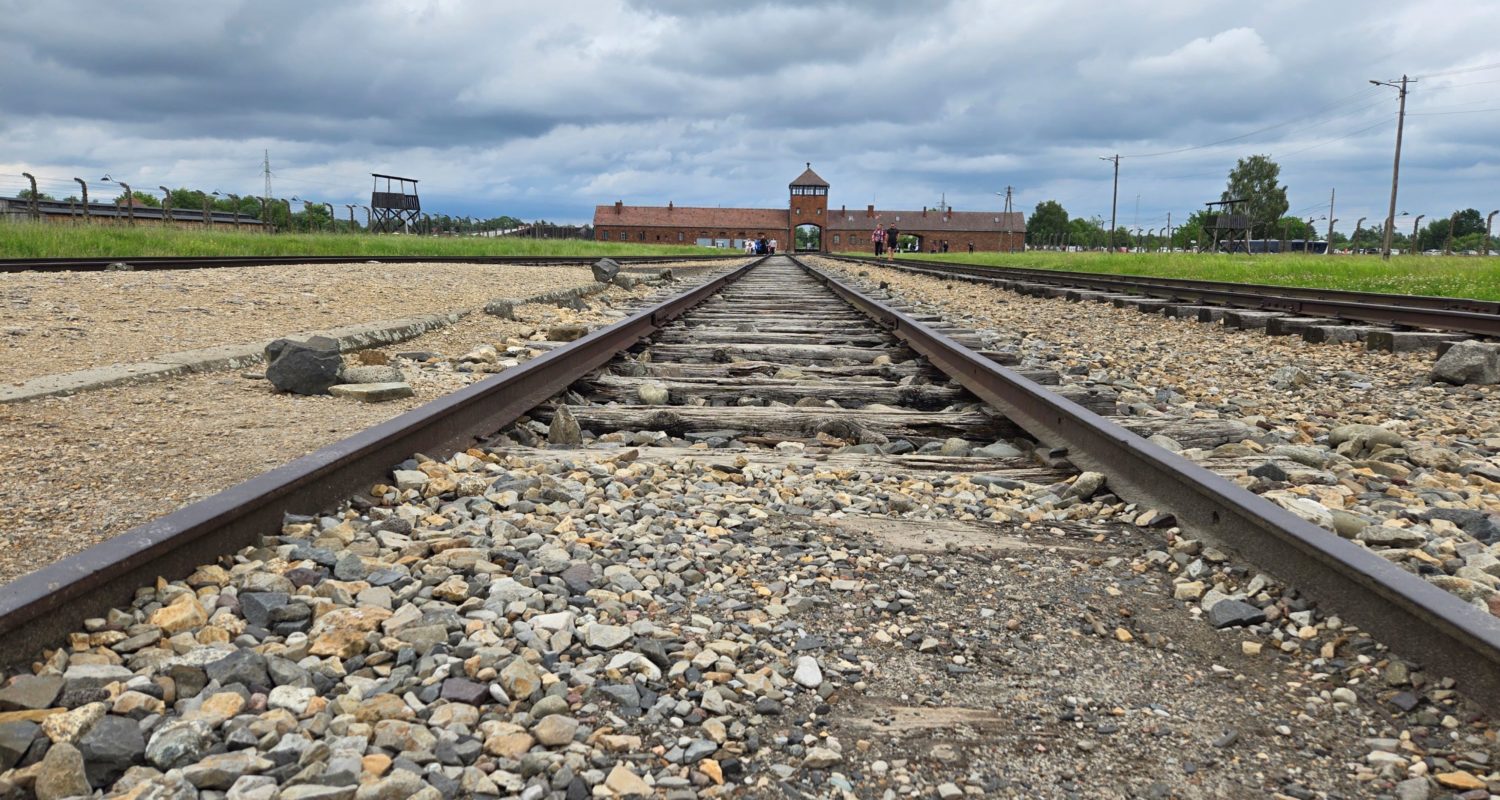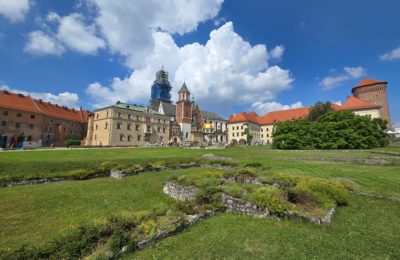World War II is a dark spot in our collective global history. It was a particularly difficult time for Central Europe and is considered the worst point in Poland’s history. When you visit Poland, you’ll quickly learn about the lasting impact this recent history has had on the country. It is sobering, but important to keep in mind if you choose to visit Poland.
Poland is in the center of Europe, bordering Germany. Its location made it critical for Germany to control, which it did through forceful occupation.
Nazi ideology that dehumanized certain ethnicities was a core component of their side of WWII. At first, people of these ethnicities were forced to work in labor camps in Germany. Then as the war went on, the Nazi party saw the need for concentration and extermination camps. Poland’s location and large Jewish population made it a prime target.
During WWII, Nazis built six concentration and extermination camps throughout Poland. However, Auschwitz-Birkenau was the largest and most efficient. It’s also the only one still mostly standing. Once Auschwitz-Birkenau was up and running at full capacity and efficiency, there was no need for the other camps. Prisoners from these camps were transferred to Auschwitz and the camps were destroyed.
In 1945, German soldiers started trying to destroy evidence of their crimes as the Soviets were advancing. Prisoners healthy enough to walk began marching away from the camp. Meanwhile, the Germans started trying to destroy gas chambers, barracks and documents at Birkenau.
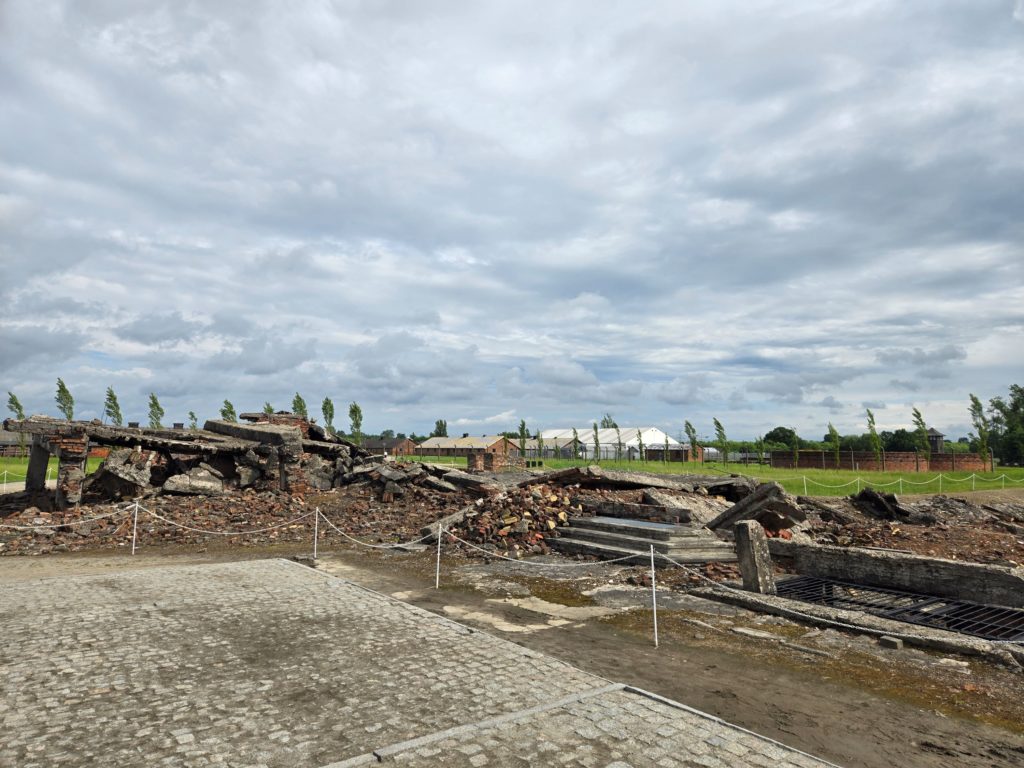
However, it was too little too late.
Much of Auschwitz-Birkenau and the evidence of Nazi war crimes exists there to this day. The camp is now a museum. It stands as a reminder and warning against the evil potential of humanity.
If you choose not to visit such a somber place during a holiday to Krakow, I understand. However, I do believe it is important to visit at least once. And if you are in Krakow, it is relatively easy to take a day trip to Auschwitz, logistics-wise.
Here is some information on how to visit and what to expect on a day trip to Auschwitz.
Step 1: Choose if You Want to Visit Independently or with a Tour
It is very possible to take a day trip to Auschwitz-Birkenau completely independently. There is a direct bus that goes from Krakow to the camp. It takes about 90 minutes. You can also drive or take a taxi. When you arrive, retrieve your ticket and decide if you want to visit the Auschwitz museum or Birkenau area first. Most people visit Auschwitz first. I visited Birkenau first.
If you do visit independently via public transit, make sure to be aware of the timetables of the bus. It is very easy to lose track of time during your visit.
Another option is to visit Auschwitz with a tour group. You can book tours through typical sources like Viator, Get Your Guide and Airbnb Experiences. Most tours will either provide pickup or a meeting point for a transfer to Auschwitz. They’ll usually also book your tickets for you. Some may also include a guided tour.
I chose to go with a tour booked through Airbnb Experiences for a few reasons:
- I didn’t realize how far in advance you had to book Auschwitz.
- Airbnb offered a small group experience, which allowed us to do things a little differently than a large group.
- It was only marginally more expensive than public transit + a ticket purchase, so seemed worthwhile.
Overall, I’m really glad I went with the Airbnb experience I did. The guide was very kind and knowledgeable, and gave us all hugs at the end. While she didn’t take us through Auschwitz-Birkenau herself, she did share a lot of information and background. She also shared recommendations for the must-see exhibits in the museum.
And warned that we wouldn’t be able to visit everything in our time.
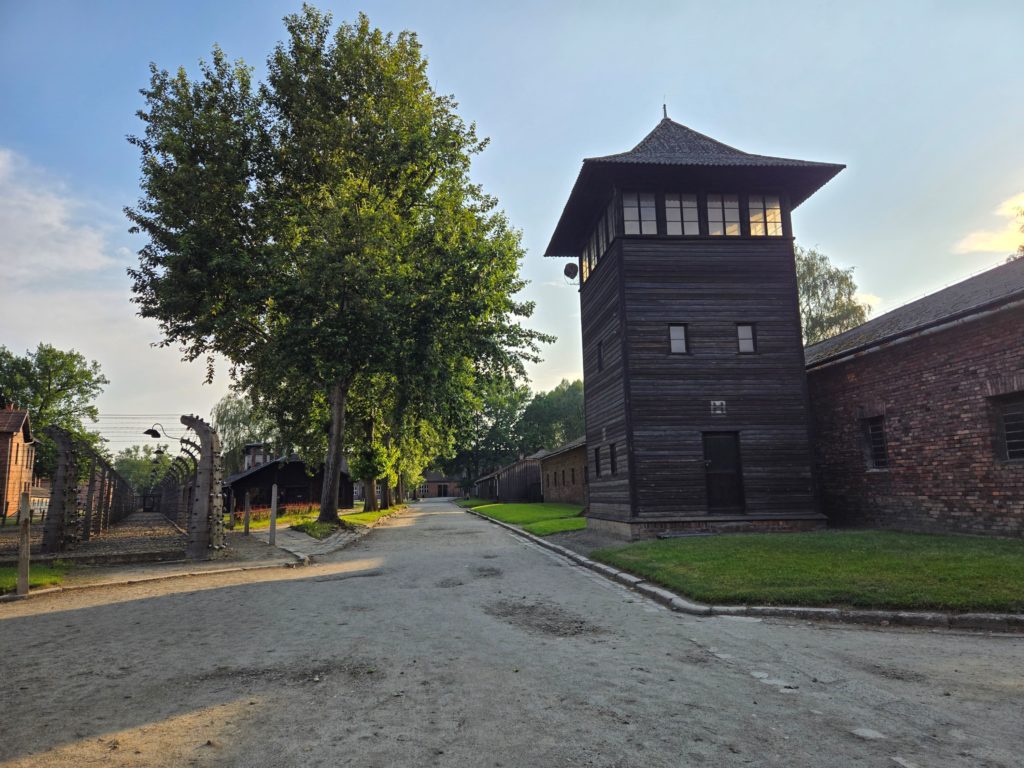
Also, the experience allowed us to do things a little differently than other groups. We visited an area of Auschwitz-Birkenau most people don’t see. It’s far out of the way and on a road too small for large vans or buses. We also toured Birkenau first then the Auschwitz museum later in the day. This route helped us avoid too may large group tours. Plus, it allowed us to visit exhibits only open later in the afternoon.
I saw some of the large groups while visiting. Honestly, it didn’t seem too pleasant to be part of them. I was grateful to be part of a small group and be able to visit exhibits somewhat independently. While we only had minimal guidance, I didn’t need more. This was especially true in Auschwitz, which has plenty of postings to read and inform you about the exhibits.
Step 2: Book Your Ticket – Far in Advance!
Having come from Warsaw where I saw almost no tourists, I was not prepared for Krakow to be so crowded. While Krakow does not have the crowds of Paris, Rome or London, it is Poland’s most visited city. And day trips to Auschwitz are one of the most popular things to do in Krakow.
That said, I was shocked to look at the website for Auschwitz-Birkenau and see no tickets available for an English tour for nearly a week. I was visiting at the beginning of June, but I imagine it’s even harder to find tickets the farther you get into summer. If you want to visit Auschwitz on a particular date, and especially if you want to join a guided tour, I recommend starting to look for tickets about a month in advance.
That said, I did speak to one woman outside of Auschwitz who said she was able to just show up and get a ticket and join a guided tour day-of. So you may get lucky if there are cancellations.
Step 3: Prepare for Your Visit
While a day trip to Auschwitz is one of the most popular things to do in Krakow, your decision to visit really shouldn’t be taken lightly. I recommend only visiting if it’s something you know you want to learn more about, and not just because it’s one of the top things to do nearby.
You can prepare for your visit better by learning a bit more about the history behind WWII and the Holocaust beforehand. I’d recommend:
- Visiting other museums or doing walking tours related to WWII history/the Holocaust in Poland. Oskar Schindler’s Enamelware Factory that is now a history of German occupation in Krakow can give you a good primer on the subject. Walking tours in major Polish cities like Warsaw and Krakow also cover WWII history.
- Watching documentaries and/or movies made about WWII and the Holocaust. One couple who did the Airbnb Experience visit to Auschwitz watched Schindler’s List the night before.
- Reading up on the Holocaust either online or through books. The Diary of Anne Frank is of course a highly read book from that era, but there are other nonfiction and fiction books that cover it as well.
I’m sure you learned about WWII and the Holocaust in school, but having a refresher is helpful before visiting such an important location.
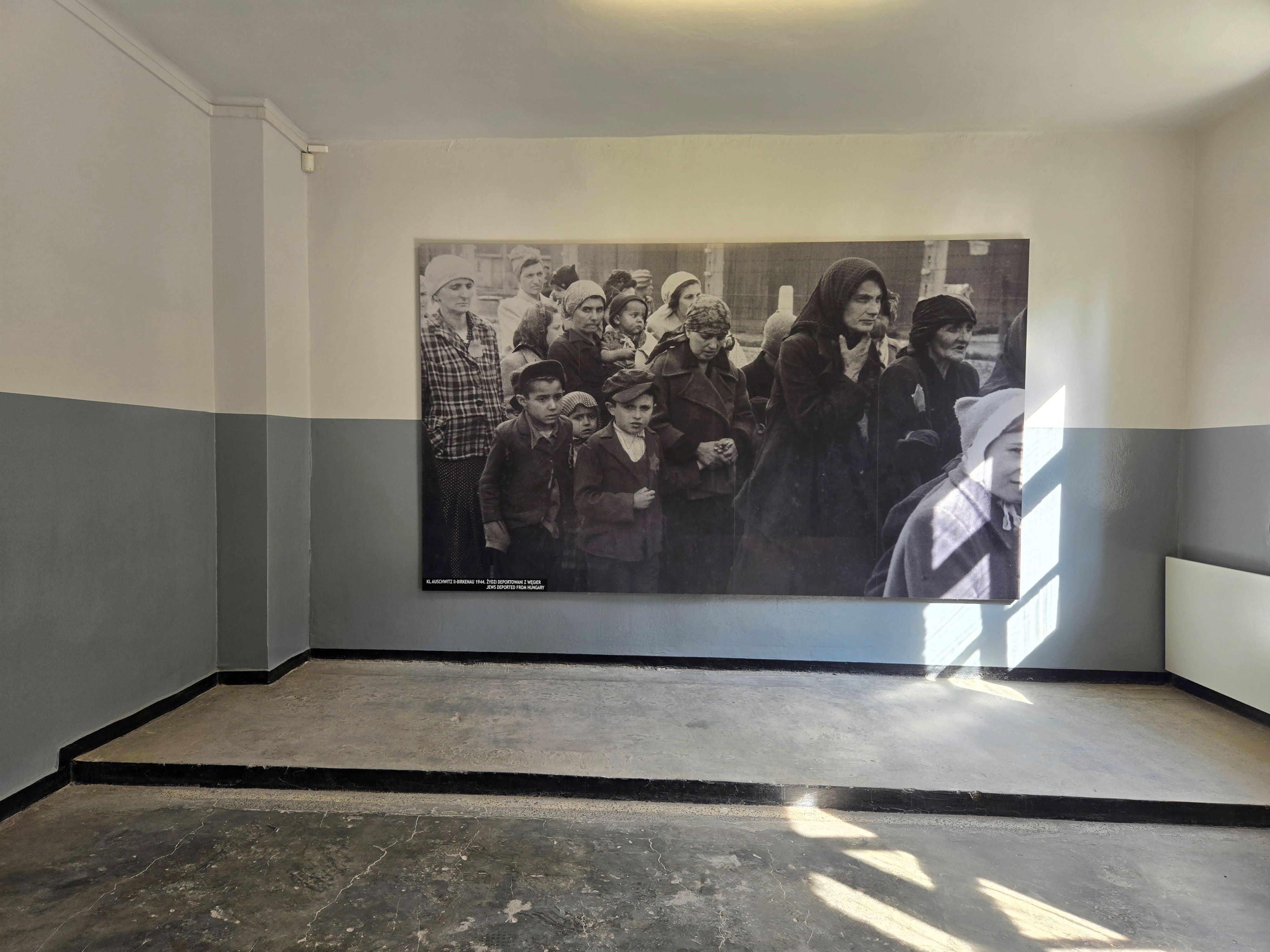
Things to Keep in Mind on a Day Trip to Auschwitz:
- Be respectful. This rule may seem obvious, but Auschwitz-Birkenau is one of the most tragic historical locations that are still intact and standing in the world. Do not pose for disrespectful pictures on railroad tracks or in gas chambers and other somber places. Save your pose game for a lighter trip. Additionally, there are some locations where signs request for people to not take pictures/videos or to be silent out of respect for those harmed. Be mindful of those signs and follow the rules.
- Don’t expect to see everything. Unless you’re planning to spend literally all day at Auschwitz-Birkenau, you’re only going to be able to see a portion of both sites. I spent about two hours at Birkenau and three at Auschwitz and still didn’t cover everything in both sites. Honestly, I don’t think I could have handled more time there even if I had it – especially the Auschwitz portion was very emotional. Our guide helped us prioritize the locations and exhibits to see in each, which was very helpful.
- Bring tissues. Even if you’re someone who is normally very stoic and composed, you’re likely to at least tear up during some of the exhibits. I saw more than one teary-eyed person walking through the exhibits. One of the exhibits about the child victims of Auschwitz and their drawings was especially heart-wrenching.
Experience Visiting Auschwitz-Birkenau:
Auschwitz-Birkenau is really something you have to experience on your own to understand it. I’m sure the experience is quite personal and very different for each person who visits. However, I’ll share a bit about my personal experience taking a day trip to Auschwitz.
I went through Airbnb Experiences due to seeing the guided tours on the museum website were sold out for most of the duration of my planned time in Krakow. The only tickets I saw were available on Monday – my last day in Krakow. If I know something is a must-visit, I don’t like to leave it to the last day, if at all possible.
The Airbnb Experience tour included a semi-guided visit to Auschwitz-Birkenau, with transportation, for only about $10 USD more than an independent trip to Auschwitz with a guided tour.
My partner and I met the Airbnb Experience group in Krakow’s Old Town. We joined five other people on the tour, for a total of seven. We piled in the van around noon and drove an hour and a half to Auschwitz-Birkenau.
Our first stop was a section of railroad and an old railroad car that had been used to transport prisoners to Auschwitz-Birkenau. This area is not a place tourists typically visit because it’s too far from the main location for people to walk. It’s also in a residential area, and the streets are too small for large vans or tour buses to visit.
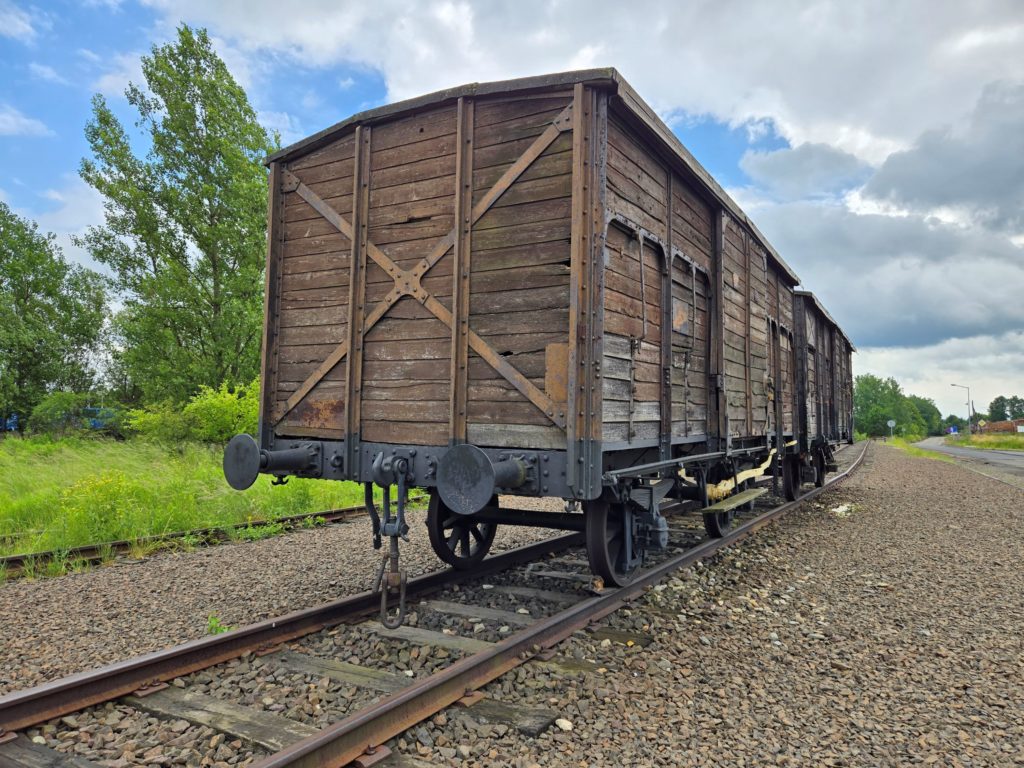
Here, our guide explained more about the history of Auschwitz-Birkenau and its lasting impact.
She told us what we could expect over the next several hours and explained that we would be visiting the sites backwards. Typically, people visit Auschwitz museum first, then Birkenau. However, to avoid the largest of the crowds and to see the exhibits only open in late afternoon, we went backwards.
Our guide explained the key highlights to see in Birkenau and why, and let us wander the site independently, only telling us to be back at Auschwitz in time for the entrance window on our ticket.
Each person/duo on the tour went their separate way to walk through Birkenau at their own pace. My partner and I walked through the gate and took an immediate right to see the reconstructed barracks. The explanations from our guide prior to getting to Birkenau plus the little bit of signage helped us understand what we were seeing. We saw the rooms where people slept and lived – originally built for 50 horses, but crammed in with 200 people. And the toilet rooms with small holes in the concrete way too close to one another for comfort.
There were also areas that weren’t reconstructed, but had the original chimneys sticking out of the ground to show where the original barracks sat.
Towards the back of Birkenau were ruins from the gas chambers. I never knew they were underground and so narrow. How horrifying must it have been to have been led underground into this narrow rectangular brick room, packed full of bodies?
Our guide explained how it would work:
The Nazis would tell people getting off the train cars that they were going to take a shower. After what was for most a long train journey full of sweat and tears, the people were glad to take a shower. Obviously a lie. The slits in the roofs would open, and the Nazi soldiers would throw in pellets that opened with people’s inhalations. They would slowly start to suffocate and die. In their panic, survivors would climb on top of the pile of bodies to try to get to fresh air. After 20 minutes, everyone would be dead.
Nazis only added shower head nozzles to gas chambers because they didn’t want people to panic upon not seeing them as they went into the chamber.
Near these gas chamber ruins is also a memorial in a dozen or so languages commemorating the victims of the Holocaust. There is also a warning to not let anything like this happen again.
After visiting this memorial, we walked over to the women and children barracks, which were original rather than reconstructed. The children’s barracks were especially sad to see.
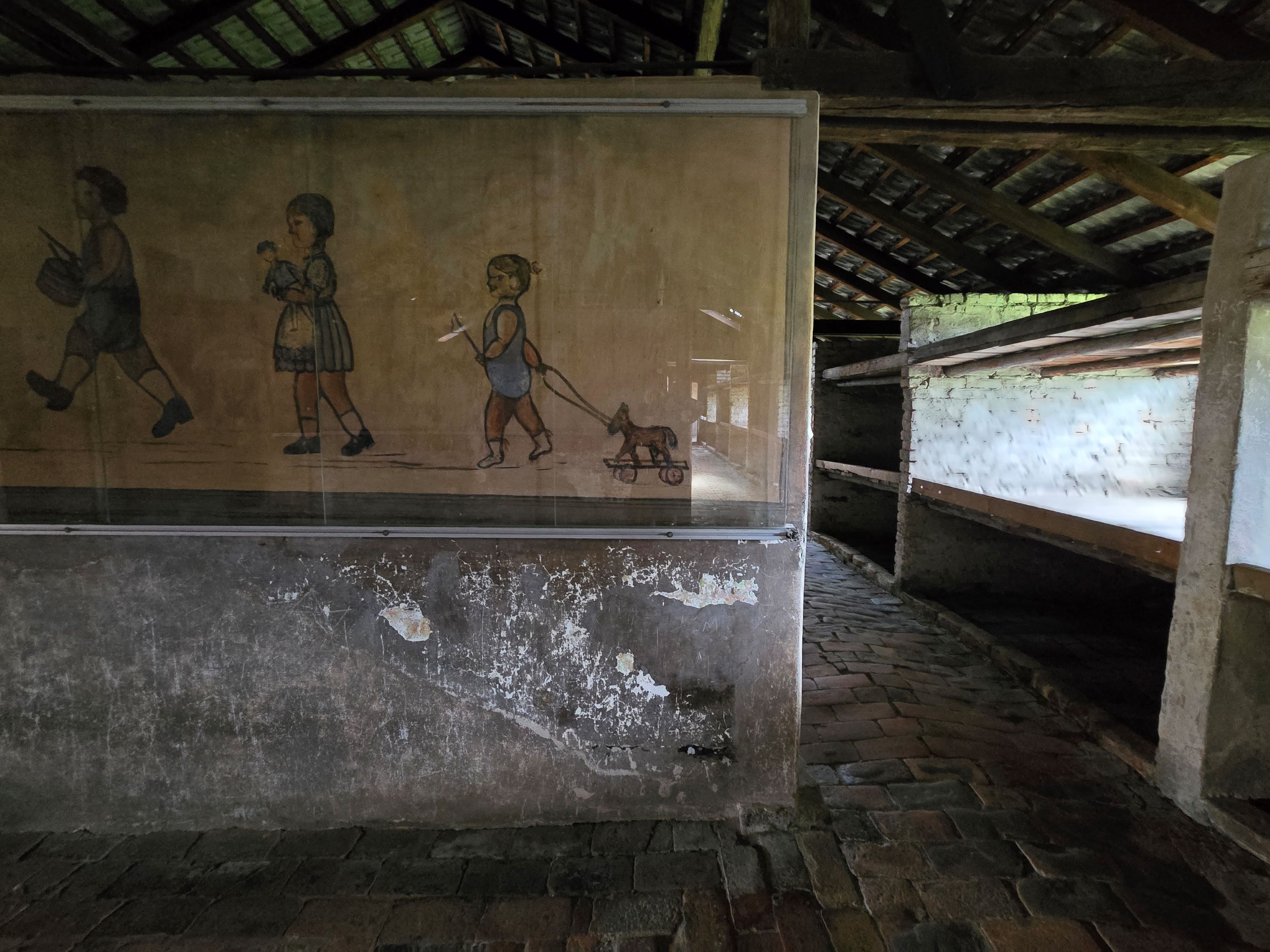
We were getting close to the upper end of our entrance time into Auschwitz, so we made our way to the shuttle. The shuttle was full, but took under 10 minutes to get from Birkenau to the Auschwitz museum.
We met our guide again at the entrance, where she gave us a map with the museum exhibits she most recommended highlighted. She warned us we wouldn’t be able to do everything, so we had to pick and choose.
As we entered Auschwitz, we walked through a long white hallway with an overhead speak repeating names of Holocaust victims, echoing off the walls.
The exhibits we started with gave us the history of the camp.
The first few showed piles of hair shaved off of new prisoners to dehumanize them, and piles of shoes, suitcases and other belongings to show the scale of the sheer number of people who were kept prisoner here. It really helped highlight the enormity of Holocaust. Some of the exhibits also had the pictures of some of the victims that were taken when they got to camp. At one point, taking pictures to document everyone became too much to record, which is when prisoners started getting tattooed.
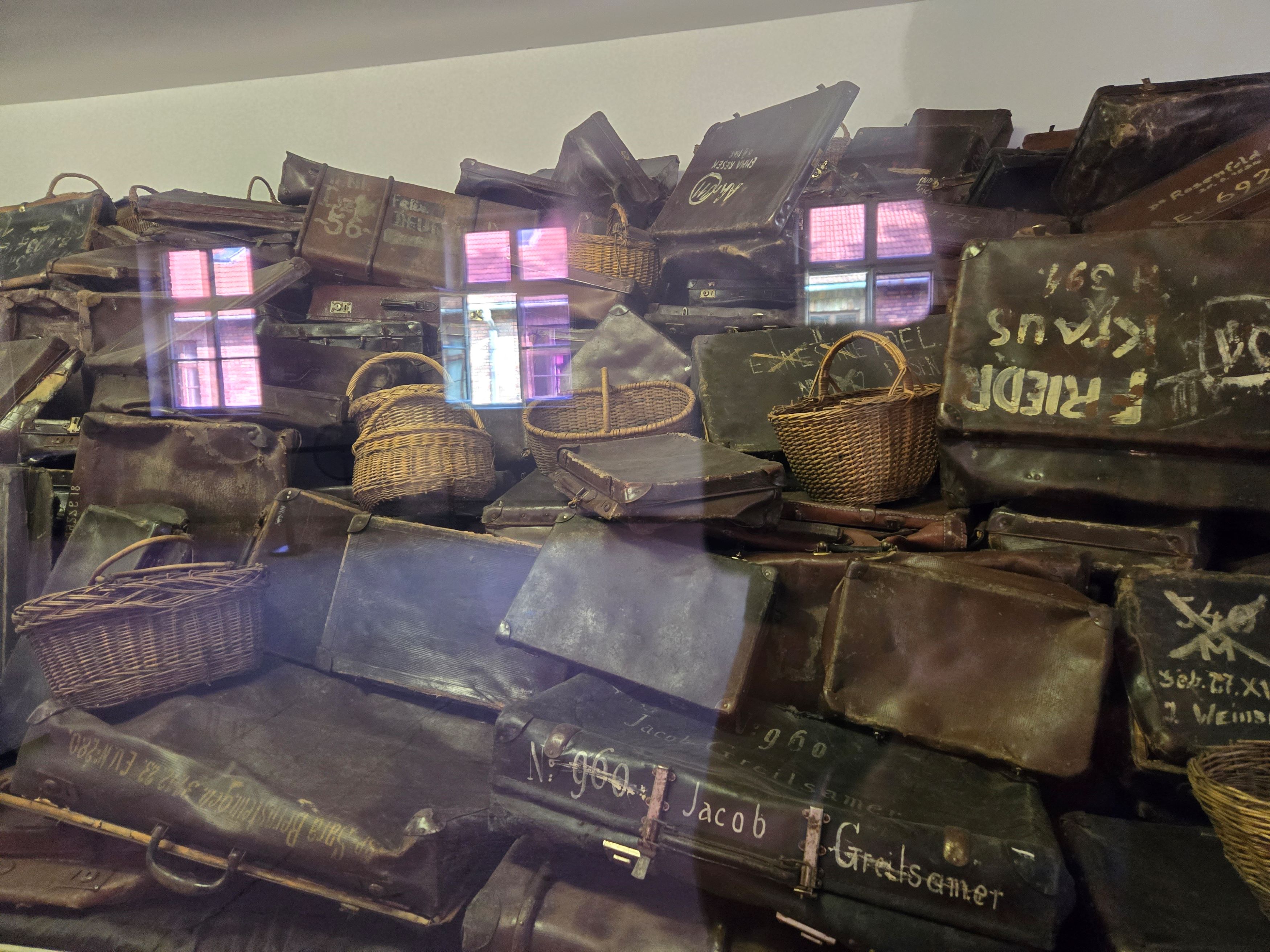
One of the most recommended exhibits was about the German propaganda that led to the Holocaust. A room filled with rows of TVs on the ceiling showing German broadcasts in different languages shared key clips from speeches and rallies given by Hitler and his supporters. The most chilling clips were of the kids – preteens and younger – doing the Nazi salute, waving Nazi flags and grinning from ear-to-ear. Just absolute brainwashing on impressionable young people.
Another part of this exhibit also shared interviews and excerpts from Holocaust victims, discussing what it was like to be waiting to be captured, captured, and eventually imprisoned in these camps.
The saddest exhibit was about child victims of the Holocaust. An artist traced drawings of kids imprisoned in concentration camps and at orphanages in pencil exactly as they were originally drawn. Some drawings depicted scenes from war: Soldiers with guns, hangings, terror. Others showed scenes of kids playing outside, strolling through parks with their families, generally enjoying being kids. These drawings were potentially more sad. Knowing what a small percentage of children survived concentration camps, and the trauma endured among those who did survive, amplified the lost childhood in these drawings. Voices of child victims also came from overhead speakers.
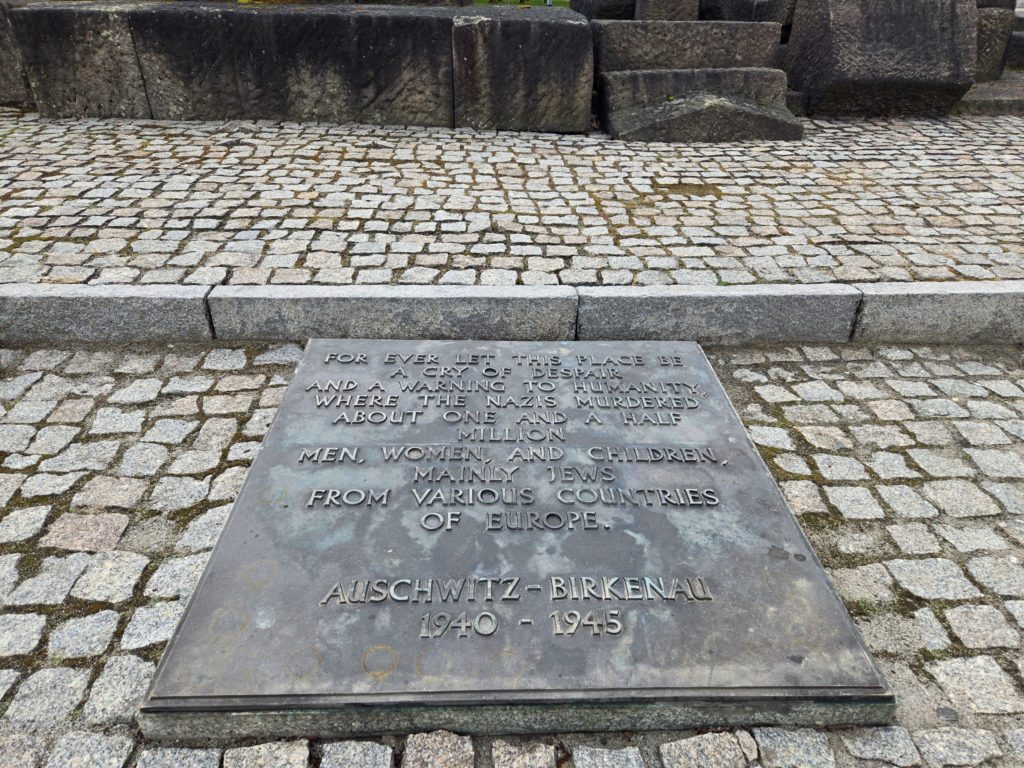
The rest of the exhibits we visited were dedicated to victims of the Holocaust from different countries.
One of the most notable was about the victims from Hungary. This exhibit was super interesting as it had different flooring, textures and sounds to take you through the story of Hungarian Holocaust victims.
We also visited the exhibit on Roma Holocaust victims, as they’re typically less discussed compared to Jewish Holocaust victims. This exhibit shared a history of the Roma people. It’s thought people who are ethnically Roma are originally from India and traveled overland to Eastern Europe. This exhibit also shared stories from different Roma Holocaust victims, including how one person evaded capture and saved his family by impersonating a German soldier.
Before leaving Auschwitz, we went through an intact gas chamber where you could really see how narrow, claustrophobic and horrific they were.
We returned to the van a little early. I asked our guide some of the questions I had from the visit to Auschwitz. But overall, there was a lot to read about in each exhibit. And the tour groups were so large, that I was glad we got to visit semi-independently. Our guide was able to answer my few lingering questions with no problem.
The ride home was pretty silent for the first half hour, with everyone sitting with the weight of what we’d just seen. But I think everyone was grateful for the experience overall.
Are you considering a day trip to Auschwitz? Let me know if you have any questions.
(Note that the pictures I’m choosing to share here are some of the tamer images you’ll see at Auschwitz-Birkenau.)

